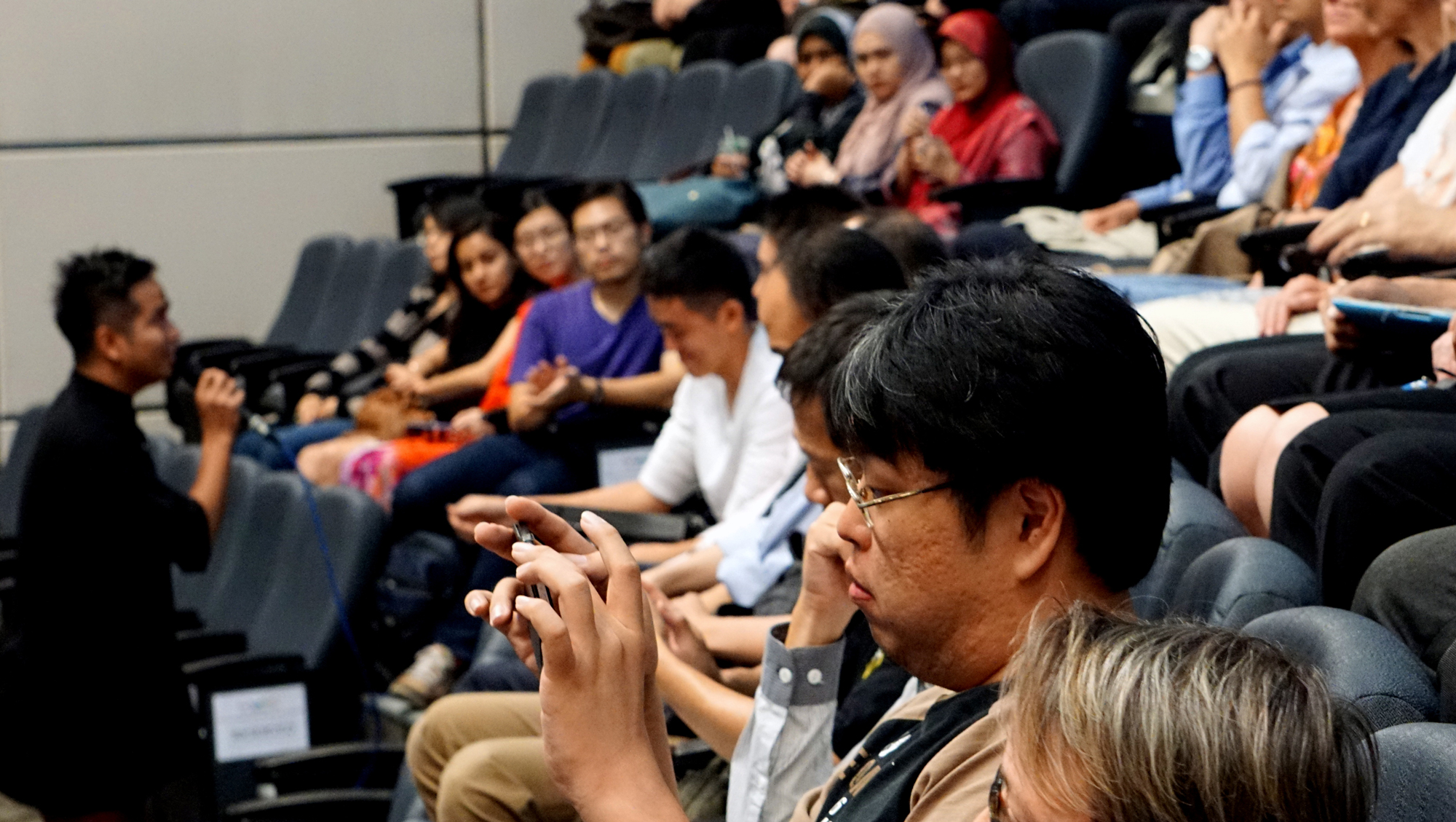The critical role that education plays in creating human capital is what makes investment towards education an economic study on its own. Adam Smith in his book “The Wealth of Nations” published in 1776 stated the importance of education in raising the productive capacity of society. Today, human capital is recognized as a main component in the engine of economic growth.The power of education is undeniable. Numerous academic papers have been written on the importance of education, how it reduces social and economic disparity, allowing progress to be shared equally. In developing countries, education is viewed as a means to alleviate poverty and engineer social change.
However, education is not just about studying and getting straight A’s, nor is it about getting into the Ivy League or Oxbridge, those are merely effects of a good education. Education provides not only critical skills and tools that help people better provide for themselves and children but also gives a person the ability of differentiating between what is right and wrong or good and evil.
Therefore it is the responsibility of society to ensure that citizens are educated. According to a study by the Federal Reserve Bank of New York in 2011, the production of University degrees and R&D activities of educational institutions are related towards the growth of human capital in the areas in which they are located. So clearly, education is not only good for the individual but also the success of communities. So when a person is educated, he not only gains knowledge or skill but he will also inadvertently contribute to the socio-economic growth of a nation. This is why education is so important. It is the basis of a civilized and structured society.
It is no surprise that education is a critical issue in Malaysia where every citizen has an opinion on. Since her independence, Malaysia has invested heavily in education until today. Not only is it the biggest expenditure of the national budget but we are among the top countries with highest investment on education. Which is why it is rather distressing to know that based on the 2010 World Bank report, our returns on the investment has been low. For the past few years, the debate on the quality of education has been a heated argument. However, most agree that the quality of education has severely dropped. This is based on our poor international performance in three consecutive TIMMS and PISA assessments as well as the high number of local graduates who are not industry ready or marketable and of course the drop in our command of English. Numerous explanations have been given but with no solid empirical data to support. In response to the public out-cry on the state of national education, the Ministry of Education has recently finalized and published the National Education Blueprint which will now be the guiding document on improving the national education situation. This document is part our governments numerous attempts in addressing our education quandary.
In summary, the National Education Blueprint is a document driven by international best practices and the 11 programmes known as shifts that were proposed are those that have worked in other countries. In essence the document is a “politically correct” document, what it proposes in theory look good and sounds reasonable. Therefore, one cannot really find fault in the document. However, it is assumed by implementing these 11 shifts we will be able to fix our education system. We will see better quality students which will result in better human capital. At a glance, it seems that there is nothing wrong with this but there is definitely more than meets the eye.
To Consider
The reaction towards the blueprint by all side in Malaysia is riddled with emotions and political leanings and with very little positive and constructive comments. Some quarters are accusing the Blueprint of quietly killing off Chinese and Indian vernacular schools while others are condemning it for not having any Bumi agenda in it. It is accepted that the Blueprint would not be able to appease everyone. However, there are a few issues with the Blueprint that needs to be highlight and taken seriously. Firstly, while the Blueprint made clear the challenges and problems in our education system, it does not however, support it with empirical evidence. This leads to the solutions that it proposes, which seems more assumptive rather than evidence based. A good public policy must be driven by evidence and not short-term political pressures. Policies should be forward-looking and really deal with problems but how do we do this without strong supporting data. Public policies implemented which are not based on evidence can cost billions yet fail to address critical social problems and can end up victimizing more people then is intended.
Reviews conducted by UNESCO and the World Bank on the Malaysian Education system have stated that the problem with the Malaysian Education system is structural and this is mostly due to the complex nature of how the Ministry is run and policies implemented. It has become apparent that policies and new initiatives are undertaken by the Ministry with little references to empirical data and there is a lack of concern about long-term implications of this. The Blueprint in no-way explains or justifies why the 11 shifts were seen as key criteria’s to improve our education system. For instance, where are the empirical data’s that shows; Shift 3: Develop value-driven Malaysians or Shift 4: Transform teaching into a Profession of choice are important factors? The Blueprint states that international best practices shows that teacher quality is the most significant school-based factor in determining student outcomes and this we can all agree on. It continues to show that only 50% of current lessons in Malaysian schools are being delivered in an effective manner and the Blueprint goes on to state that shift 4 will result in:
“Teaching will be a prestigious, elite profession that only recruits from the top 30% of graduates in the country. Teachers will receive the best training possible, from the time they enter their teacher training programmes, through to the point of retirement. They will have access to exciting career development opportunities across several distinct pathways, with progression based on competency and performance, not tenure. There will be a peer-led culture of excellence wherein teachers mentor one another, develop and share best practices and hold their peers accountable for meeting professional standards”
However, what the Blueprint fails to explain is, what the current problem with our existing teachers is, resulting in them failing to meet their basic requirement in teaching. The Blueprint further fails to explain how long the situation has been festering and how many cohorts of children have been victimized by this. If this has been going on for more than 10 years, then the situation is dire and a structural change is needed, more than just add on classes to upgrade already overworked teachers.
Structural changes must be done in tandem with a shift in the paradigm mind-set of existing workforce. Malaysia’s education policy as well as its workforce is entrenched in the old New Economic Policy (NEP) mind-set even after the introduction of the New Economic Model (NEM). Under the NEP, the objective of education was to increase access to education as well as narrow the gap of racial inequality. We have made enormous strides in providing access to education which is commendable but today our education system may no longer be congruent with current realities. We need to shift from increasing access to improving quality which means stressing more on merit-base with limited targeting to ensure that the bottom 40% of the population is not left behind. This inadvertently requires a whole different skills-set and perspective not just by employing the brightest to become teachers but to review our whole teacher training and staffing system as well as management policy. We need to address some long-standing structural weaknesses in the system as well as the negative side-effects of the NEP such as inequality, dependency and racial polarization through-out the whole education system.
One major proposal which is much needed but was lightly touched by the Blueprint is decentralization. Increasing local autonomy of schools and districts as proposed by the Blueprint is a short-term measure. There is currently a global trend of decentralizing education systems. The process transfers decision-making powers from central Ministries to State government, local governments, communities and schools. The extent of the transfer varies but of course it does result in the de-concentration of administration as well as transfer of financial control to the region or local level. This will allow schools or local authorities to have more say in the management, budget as well as staffing of their own schools without having to go through central authority that is riddled with bureaucracy.
Looking at our current system which is highly centralized and is experiencing the pitfalls of a centralized education system such as administrative and fiscal inefficiency, and poor quality of services especially from the teaching staff, the advantages of decentralization is extremely appealing. In general, the process of decentralization can substantially improve efficiency, transparency and accountability. It would also better reflect local priorities, encourage participation of all stakeholders such as parents and local communities, and, eventually, improve quality. What the Government, in this context the Federal really needs to do is review back its role as an education provider. Perhaps limit its role to monitoring, evaluating and policy development only and shift the rest to the State, local authority and schools themselves.
Excellence
In pursuit of wanting to be the best internationally, we focus our national policies on producing “gifted and talented” students. This is evident in our pursuit of A’s in national exams and the continuous praises that Ministry and politicians give themselves for producing students who achieved so many A’s. There is a fundamental problem with this, while it is not wrong to be a gifted student, rather I would say one is blessed to be gifted but if an education policy focuses on gifted children which are a minority, this takes away the attention on the 99% and some will fall through the cracks. A holistic education system does not set it goals by how many straight A’s students it has or how many “geniuses” it produces but by ensuring that no student fails. We have come to evaluate our education process solely on national exams. Everyone, student, parent and teachers put all their measurement on national examination results. While the Blueprint tries to address this, by introducing “assessments” but it is yet to see how this will take place. Currently, rewards to students, teachers and schools are still based on examination outcome. Salary increments and school rankings based on national exams, which is not wrong in itself bad but it can distort priorities.
Teachers and schools should be evaluated on numerous criteria’s, among them a decrease in drop-out rate or the increase in number of students maintaining their whole secondary school performance. But how can we do that when a student record/report card has no value. Student report cards which shows the progress of a student’s academic life is crucial. These report cards represent more than just passing exams but how they are fairing in school overall and most importantly, we can detect whether a student is failing early on and do the required intervention. Unfortunately the current system is not using it. Therefore, a paradigm shift on how we evaluate education is pertinent.
It is of course difficult to make a value-added critique or proposals without clear empirical data which itself is hard to get due to the secrecy of the Ministry. For instance, inspectorates reports are not disclosed or shared even within Ministry, Examination board do not make public data on exams. We are left to assume that passing marks are the same yearly and that the exam analysis that is made public in truth only tells us how many students got straight A’s as opposed to a proper critique. Sadly, the public is forced to accept this quality of work as conclusive. However, the bottom-line is, we need to be very clear where the real problem is in our education system. Making random guesses and assumptions are costly and we do not have a bottomless pit of resources to tap into.
The Finish System
There is no doubt that we need a total reform our education system but instead of just taking piecemeal proposals from other countries, what would be better is to review on how good countries design their policies in the first place. International best practices is always a good benchmark to work with, and what better system to look at than one of the best systems in the world, the Finnish Education System. The Finnish society has gone through an economic and cultural transition from being a mono-cultural, agrarian, and peripheral society to a multi-cultural, high-tech knowledge economy. The Finnish education system is attractive because it successfully combines quality with widespread equity and social cohesion through reasonable public finance. The recent success of Finland as a nation has often been explained by its lack of ethnic minorities and a relatively homogeneous society.
Even though the 5.3 million population of Finland is not as diverse as some other European nations, migration trends since the early 1990s indicate that Finland is rapidly transforming into a multi-cultural society yet their education continue to perform. So how did Finland have such a robust and dynamic education system? Has it always been like that? Finnish education system was never really affected by global education reforms of the 1980s, the policies today are a result of decades of systematic, mostly intentional development that has created a culture of diversity, trust, and respect within Finnish society in general and within its education system in particular, for a better explanation, please refer to below table:
Table 1. Some aspects of global education reform trends and education policy principles in Finland since the 1980s
Education policies and reform principles
Global education reform trends
-
-
Standardization
Setting clear, high and centrally prescribed performance standards for schools, teachers and students to improve the quality of outcomes.
-
Focus on Literacy and Numeracy
Basic knowledge and skills in reading, writing, mathematics and natural sciences as prime targets of education reform.
-
Consequential Accountability
The school performance and raising student achievement are closely tied to the processes of promotion, inspection and ultimately rewarding or punishing schools and teachers based on accountability measures, especially standardised testing as the main criteria of success.
Education Policies in Finland
-
Broad Learning Combined with Creativity
Teaching and learning focus on deep and broad learning giving equal value to all aspects of an individual’s growth of personality, moral, creativity, knowledge and skills.
-
Intelligent Accountability with Trust-Based Professionalism
Adoption of intelligent accountability policies and gradual building of a culture of trust within the education system that values teachers’ and headmasters’ professionalism in judging what is best for students and in reporting their learning progress.
Sahlberg, P.
As you can see, the policies that Finland had taken during an era of global education reforms were different. This is not to say that others were wrong but rather, Finland’s success has been the result of policy makers who pursued reform in ways that went beyond optimizing existing structures, policies and practices, and moved towards fundamentally transforming the paradigms and beliefs that underlay educational policy and practice. In the 1990s the discourse in education policy went through further changes and Finland was not immune to the development outside, it had reviewed its policy based on the current neo-liberal system but it still remained true to its fundamentals.
The bedrock of the Finnish education policy is that it is based on sustainable leadership, established on values that are grounded on equity, equitable distribution of resources rather than competition, intensive early childhood intervention for prevention as well as providing an equal head start to all and of course building gradual trust among education practitioners especially teachers with other stakeholders such as parents and communities. Finland’s policy design was based on what was right for them and on their needs and they didn’t have a problem to revamp the system when it no longer served the needs of the country.
Malaysian education system is currently at a crossroad. The government has been announcing one reform plan after another and we have been reviewing our education philosophy a number of times yet it is still leading us to the same results. Accountability and transparency is much needed if we truly are to reform our education system. Mimicking other systems will not be sufficient in addressing our inherent problems. Japan did not become a first world country by mimicking the West, it took the technology and redesigned it in its own image. It is evidently clear that we need a strong and healthy human capital in order for this country to prosper and education is the key.
However, are a few proposals on top of existing policy really going to transform our education system? Every one of us is a stakeholder in the making of our human capital resource and it will take all of us to reform it. We need real reform, a full review of the current system must be done and we need the Government to have the political will to make the boldest decisions by making policies that better suits us based on empirical data – meaning, owning up to its past mistakes and move on from there.
References:
Sahlberg, P. Education policies for raising student learning: the Finnish approach. Journal of Education Policy, Vol. 22, No. 2, March 2007, pp. 147–171
Chilcot, J.H. A Critique of Recent Models for the Improvement of Education in Developing Countries. Anthropology & Education Quarterly, vol. 189, No 3 . Sept 1997. Pp 241- 245
Machin, S. the New Economics of Education: Methods, Evidence and Policy. Journal of Population economics, vol. 21, No1. Jan 2008. Pp 1- 9
Malaysian National Education Blueprint 2103-2025. October 2013
Do Colleges and Universities Increase Their Region’s Human Capital? : http://journalistsresource.org/studies/society/education/colleges-universities-regional-human-capital/#sthash.ieRtwolx.dpuf
This is the opinion of the author and does not necessarily represent the views of IMAN Research.




